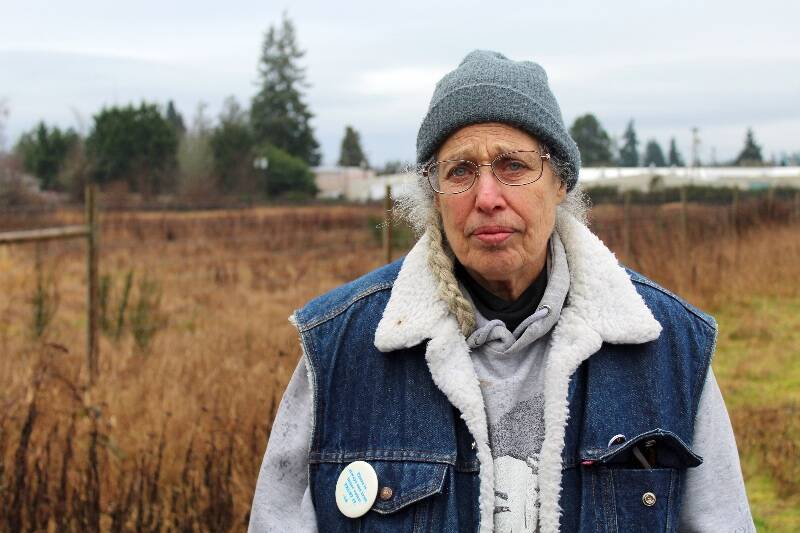Volunteers counted around 90 homeless residents on Vashon-Maury island in this year’s annual point-in-time count, though the real number is likely much higher.
Every year, volunteers fan out across the county to count how many people are living outside. It’s part of a national program to get a clear sense of how many people in the U.S. are living without a stable roof over their head. Data from the count informs how money and resources are spent on services.
This year, the island’s counting team was Interfaith Council to End Homelessness care team lead Hilary Emmer, Patricia Bañuelos and Valeria Flores from Vashon Youth and Family Services, and Jessica Lisovsky.
While the official count this year was 90, Emmer’s personal count of homelessness on the island this year was 149 — and she believes the true number could be closer to 200.
The island’s 2020 count tallied 147 homeless people, Emmer said. Of that count, three people are no longer alive; one moved to California and another moved to West Seattle; and one found housing through Vashon HouseHold’s Home Share program, Emmer said.
That means that after four years of weathering the pandemic, the number of homeless people has stayed stable; 147 to 149. “We’re consistent,” Emmer said.
But the survey question from this year that keeps Emmer “up at night” is this: “How old were you the first time you experienced homelessness?”
29% of Vashon survey-takers said it was when they were younger than 18. Another 24 percent said it was between the ages of 18 and 24.
“This is a crime of our country,” Emmer said, a tear streaking down her cheek. “We don’t break cycles in this country. I mean, this is systemic. It’s not (unique) to Vashon. … Once you’re in that situation, you’re stuck. That’s all you know. And people judge you that way. (People) see a homeless person, and (think) they’re the scum of the earth. No, they’re not.”
Most parties involved in the point-in-time count agree that it’s an imperfect tool at best, vastly undercounting the true number of homeless people. The King County Regional Homelessness Authority (KCRHA), a taxpayer-funded public agency that coordinates the homelessness response across the county, began using an algorithm in 2022 that seeks to account for the undercount.
The point-in-time count has the benefit of generating comparable data across many years. Even if it’s undercounting, it can still give you a decent sense of whether homelessness is increasing or decreasing.
The count relies on people who are homeless coming to “hub” locations to help fill out surveys. They earn a debit card loaded with $20 for doing so, and are encouraged to ask other unhoused people they know to come to fill out the survey as well. This “snowball” method aims to bring more and more people in over the period of the survey.
Emmer didn’t follow the process by the book. Instead of doing all the surveys at their hubs, which were located at the Methodist Church, food bank and Presbyterian Church, as the survey instructs, some of Vashon’s interviews were done over the phone, she said, given the practical challenges of getting unhoused people to come all the way in to town.
“We’re making the homeless come to us, instead of us going to them — which is really inconvenient, and likely to fail,” Emmer said. “We have their phone numbers. Let’s just do it on the phone … gas is really expensive on this island, and some of them live on the south end. … I felt it was important to reach all of the homeless people I know.”
With the Vashon count concluded, Emmer came up with a range of numbers tallying the island’s homeless population:
- 90 people who either filled out, or were referenced by someone who filled out one of the 51 completed surveys. This is the official count given to the KCRHA, and it is understood to be an undercount.
- 149 people who Emmer confidently can say are homeless on the island. That includes the 90 above plus homeless people who did not answer surveys, homeless students and their parents not counted, and others she got in touch with or tallied.
- Closer to 200 is what Emmer believes is the real number of homeless people on the island. This includes all of the above, plus people whom she isn’t aware of, such as some Latino residents who were more difficult for the volunteers to reach.
Breaking the numbers down further, Emmer said:
- Of the 90 people counted in the surveys, 52% are white, 43% are Latino, 3% (or three people) are Native American and 1% (or one person) is Black.
- Of the 51 who filled out surveys, 16 are sleeping inside, i.e. couch surfing or sheltering in an overcrowded house. Another 16 are living in a trailer or RV. Eleven are living in a car or truck. Six live in a shed, and two are sleeping outside.
A fuller sense of the numbers will come over the next few months as the KCRHA tabulates the data for Vashon and the county as a whole.



